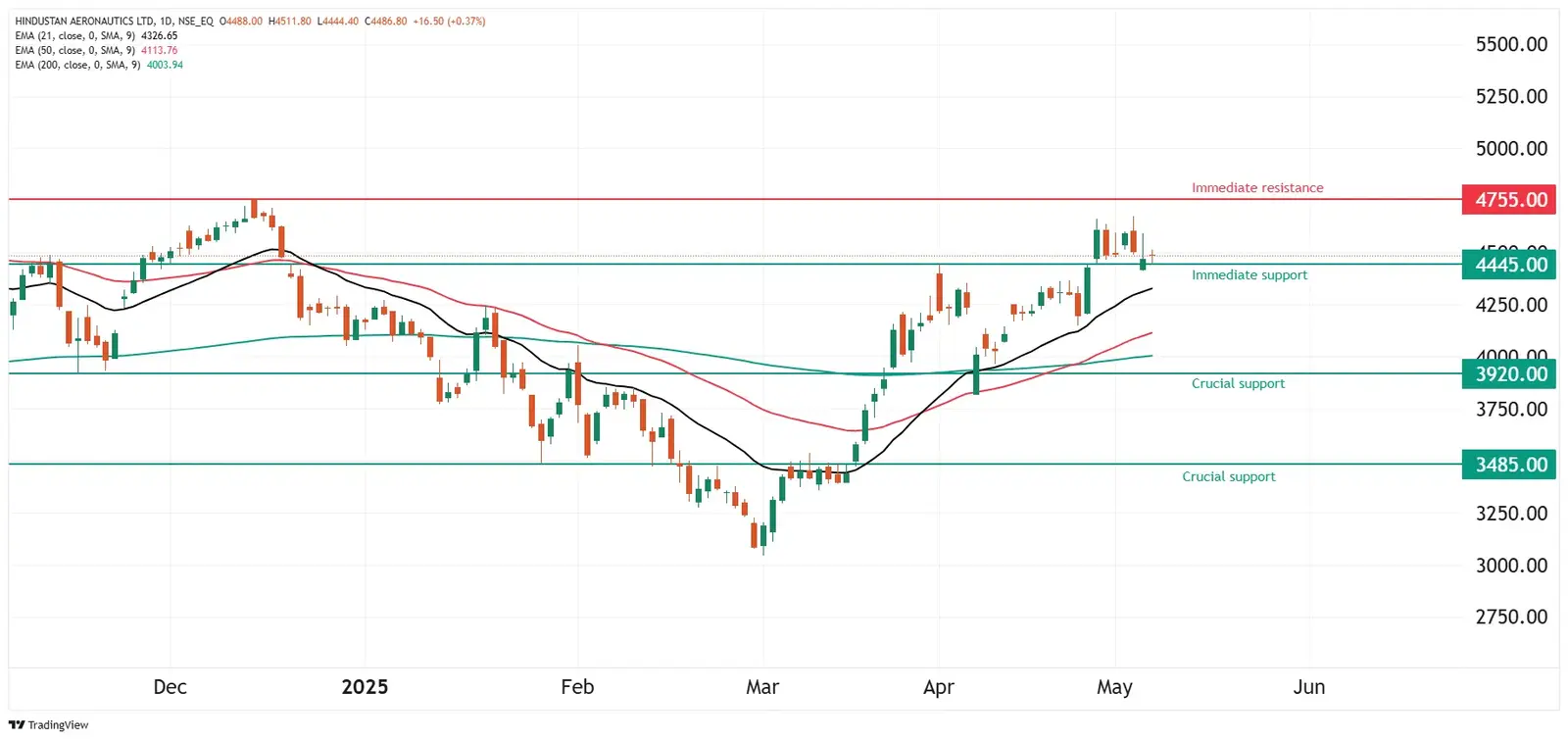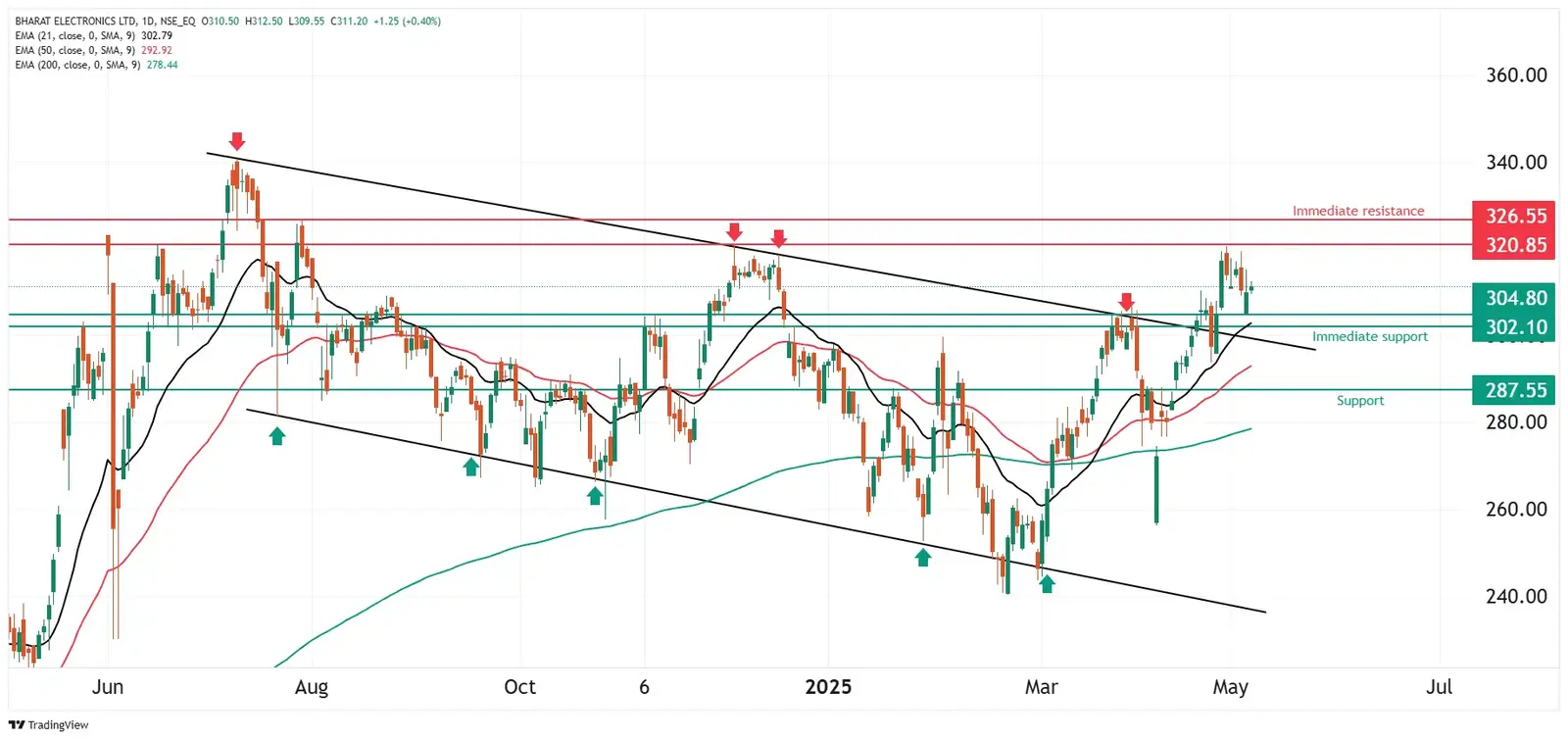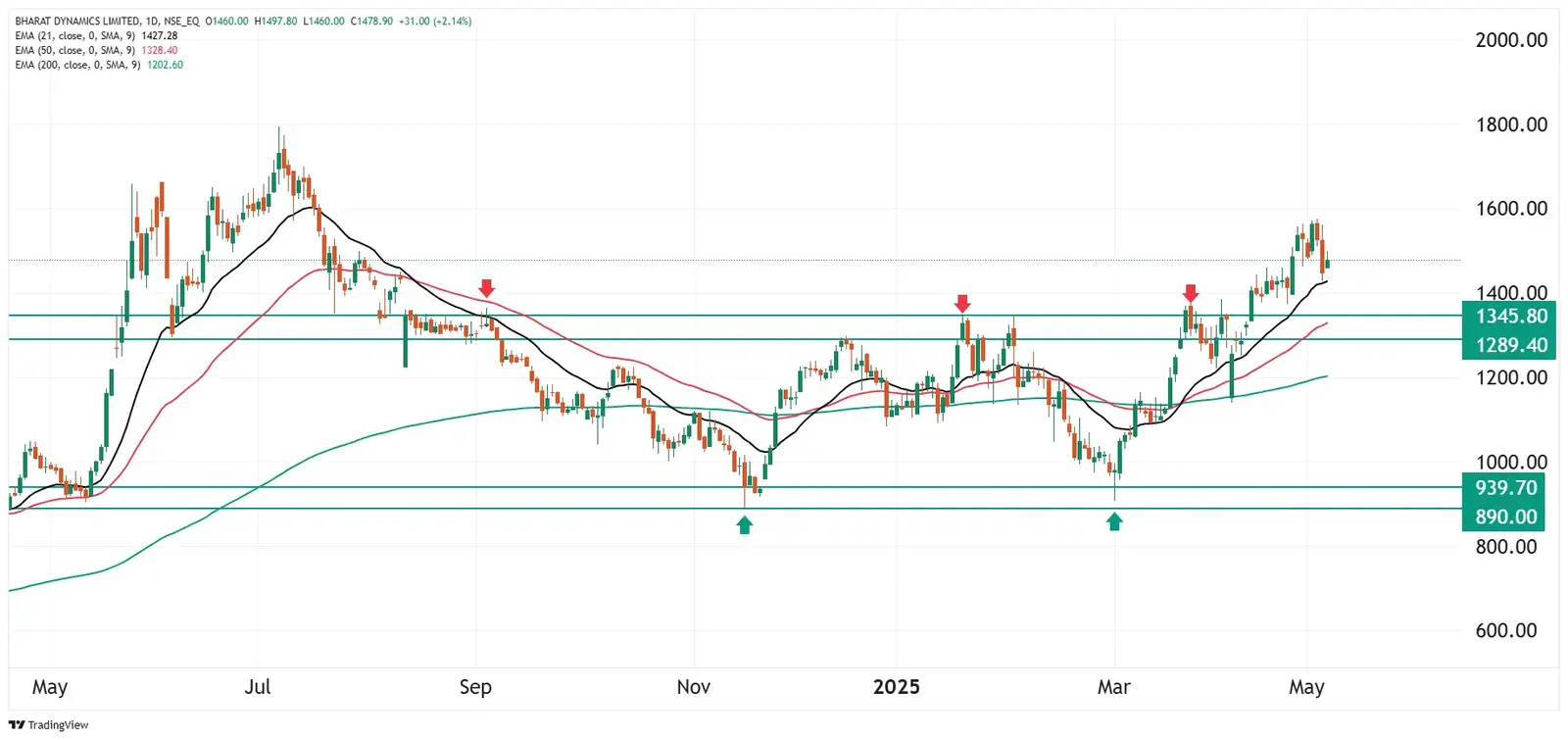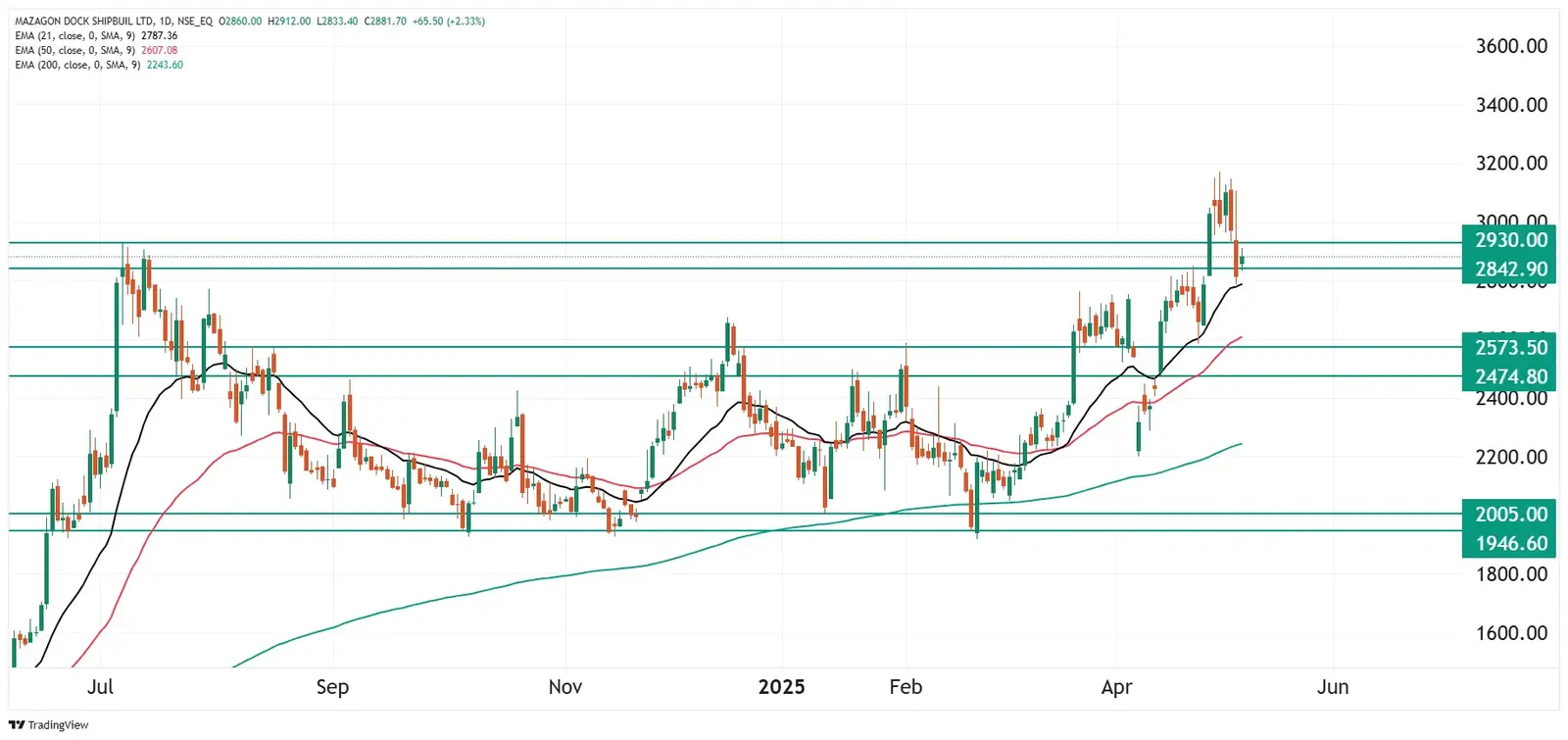Market News
Bharat Dynamics to Mazagon Dock: Defence stocks deliver return up to 35% in 2025 amid India-Pakistan conflict
.png)
5 min read | Updated on May 09, 2025, 09:11 IST
SUMMARY
India's defence sector has become a key investment hotspot in 2025, driven by robust order books, pro-defence policies and rising geopolitical tensions.

The technical structure for Hindustan Aeronautics remains bullish on both the daily and weekly charts. | Image: Shutterstock
Indian defence stocks have become a standout sector for investors in 2025, consistently delivering impressive double-digit returns despite broader market volatility. This surge has been driven by a combination of geopolitical developments, strong government support and robust order inflows, making defence companies attractive bets for long-term growth.
| Defence stocks | Year-to-date return (%)* |
|---|---|
| Bharat Dynamics | 29.4 |
| Paras Defence | 34.8 |
| Mazagon Dock Shipbuilders | 26.5 |
| Garden Reach Shipbuilders | 9.9 |
| Hindustan Aeronautics | 5.8 |
| Bharat Electronics | 4.7 |
| NIFTY India Defence | 5.9 |
- Geopolitical risks boost defence spending
Ongoing tensions between India and Pakistan, especially after incidents like the Pahalgam attack, have prompted India to impose sanctions and take strategic military actions such as Operation Sindoor. These developments typically lead to increased defence budgets and faster procurement cycles, creating a favourable environment for defence manufacturers. The government’s focus on strengthening national security translates into higher demand for defence equipment, which in turn supports revenue growth for companies in this sector.
- Robust order book ensures revenue visibility
Many defence companies are benefiting from a healthy pipeline of orders that provide stable revenue forecasts. For instance:
- Hindustan Aeronautics Limited (HAL) secured orders worth ₹1.2 lakh crore in FY25, with its order book expected to reach nearly ₹2 lakh crore in FY26.
- Bharat Electronics Limited (BEL) maintains an impressive order book of ₹71,650 crore as of April 2025.
- Bharat Dynamics Limited (BDL) holds an order book worth approximately ₹20,700 crore.
These substantial order backlogs reduce uncertainty and underpin steady business growth.
- Government push for domestic manufacturing
Indian government’s ‘Make in India’ initiative and updated defence procurement policies have created a supportive framework for indigenous defence production. This not only enhances self-reliance but also opens avenues for export expansion, positioning Indian defence firms as key players in the global market.
Key stocks on radar
- Hindustan Aeronautics (HAL): The technical structure of the HAL remains bullish on both the daily and weekly charts, reflecting sustained upward momentum. The stock has surged over 40% from its March 2025 low and is currently consolidating at higher levels. This indicates a pause after a strong rally. Long-term investors may consider monitoring the price action around key support levels on the daily chart and wait for the risk-reward to turn favourable.

- Bharat Electronics (BEL): Shares of BEL moved out of the downward-trending channel and reclaimed the crucial resistance zone of ₹302-₹304. The stock has surged over 20% from its April low and is currently consolidating at higher levels. Long-term investors can monitor the price action of the stock around its 50-day or 200-day EMA. A rebound from the crucial support zones supported by a bullish candlestick pattern can provide further directional clues.


- Mazagaon Dock Shipbuilders: The shipbuilding major hit a fresh all-time high after nine months and is currently trading around the crucial support zone of ₹2,842 and ₹2,930. It may extend the bullish momentum if it holds the crucial support zone on a closing basis, supported by a bullish candlestick pattern. Meanwhile, the stock has jumped over 40% from its February low and is consolidating at higher levels.

The break-even point for the May ATM call is 4.5% above the close. This means, a sustained move above this level would make the strategy profitable.
Conclusion
In a nutshell, a long-call strategy benefits if the share price rises. Options offer flexibility to capitalises on different market conditions—whether bullish, bearish, or range-bound. However, past performance does not guarantee future results. It’s essential to evaluate risks carefully and have a well-defined risk management plan before executing any strategy.
About The Author
Next Story

